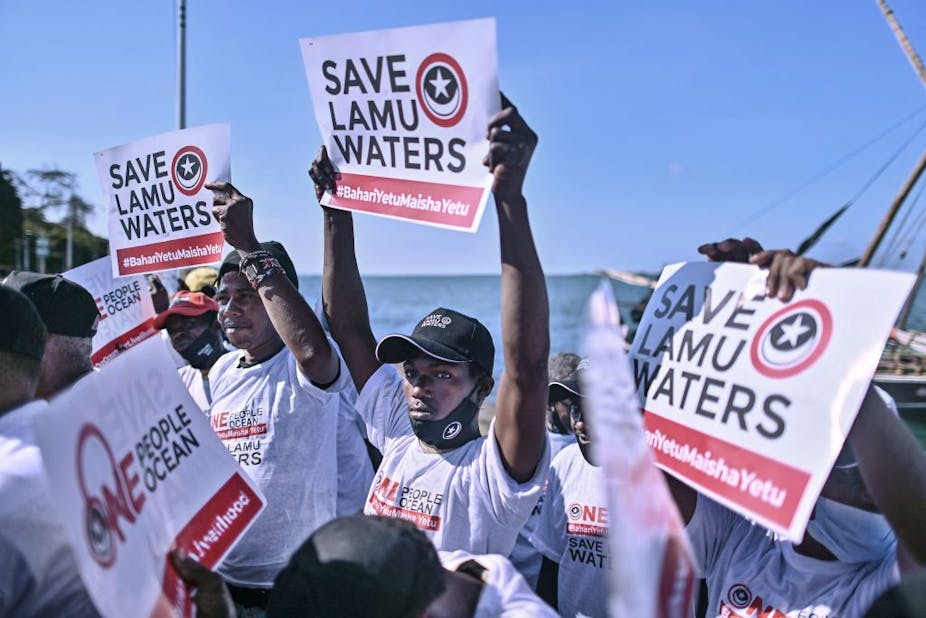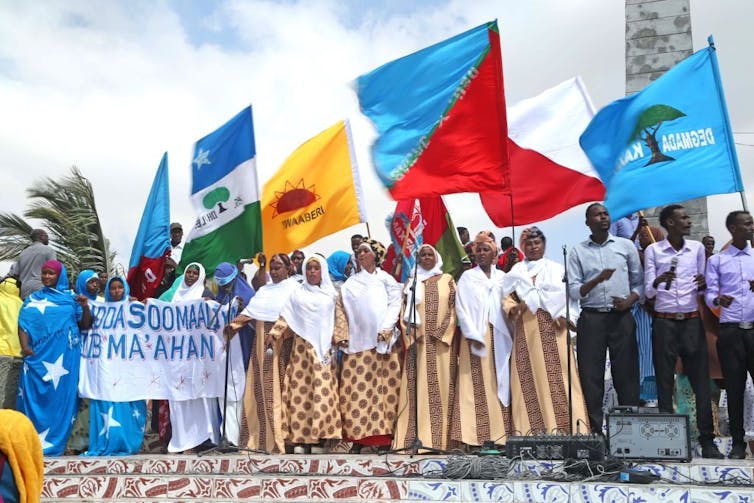The maritime tussle between Kenya and Somalia – and what happens next

Kenyan coastal fishermen based at Lamu near Somalia demand to be heard in the court dispute over Indian Ocean maritime boundary in March 2021. Photo by Tony Karumba/AFP via Getty Images)
Kenya’s objections
Kenya maintains that there is an existing maritime boundary established in 1979. Nairobi claims that boundary places the disputed 160 000 square kilometres within Kenyan territory. That boundary was respected by both countries until 2014, when Somalia took Kenya to the International Court of Justice seeking to dispute its ownership.
The government of Famajo is opposed to this Kenyan position and believes that Somalia can only get justice from the International Court of Justice.
Kenya has also questioned the composition of the bench handling the case. Judge Abdulqawi Yusuf, who is one of 11 on the bench, is not only a Somali citizen but has previously represented Somalia. At the Third United Nations Conference on the law of the sea, Yusuf advanced Somalia’s argument on the dispute. He said the delimitation of the exclusive economic zone of Somalia and continental shelf should not be effected in accordance to the principle of equidistance but rather by application of equitable principles.
The logic of this argument is that the decision made must be guided by equity and fairness not necessarily the distance of the continental shelf.
The judge went as far as to castigate the African Union’s principle of “uti possidetis”, which vouches for the sanctity of colonial borders in Africa. Given his previous leanings. Kenya has previously argued that he is likely to rule in Somalia’s favour and should voluntarily remove himself from the case.
Finally, Kenya also claims that there are third parties with commercial interests who are interested in the case. It claims these parties are pushing Somalia to carry on with the case even though it threatens to destabilise the peace and security of an already fragile region.
 M
M
Somali protesters demand a solution for the maritime boundary dispute with Kenya during a February 2017 demo in the capital Mogadishu. Photo by Sadak Mohamed/Anadolu Agency/Getty Images
Going forward
Kenya’s withdrawal from the case means that it no longer recognises the case and is no longer affected by the proceedings, or the court’s final decision.
Ultimately, any decision that the International Court of Justice makes will only be enforceable if both parties to the conflict agree to comply. This could bring the dispute back to square one should Kenya refuse to comply. In that case, only the United Nations Security Council would have the ability to enforce the ruling of the court through coercive diplomacy. The chances of Security Council intervention in the matter are very slim given Kenya’s withdrawal from the case.
Source:theconversation.com
